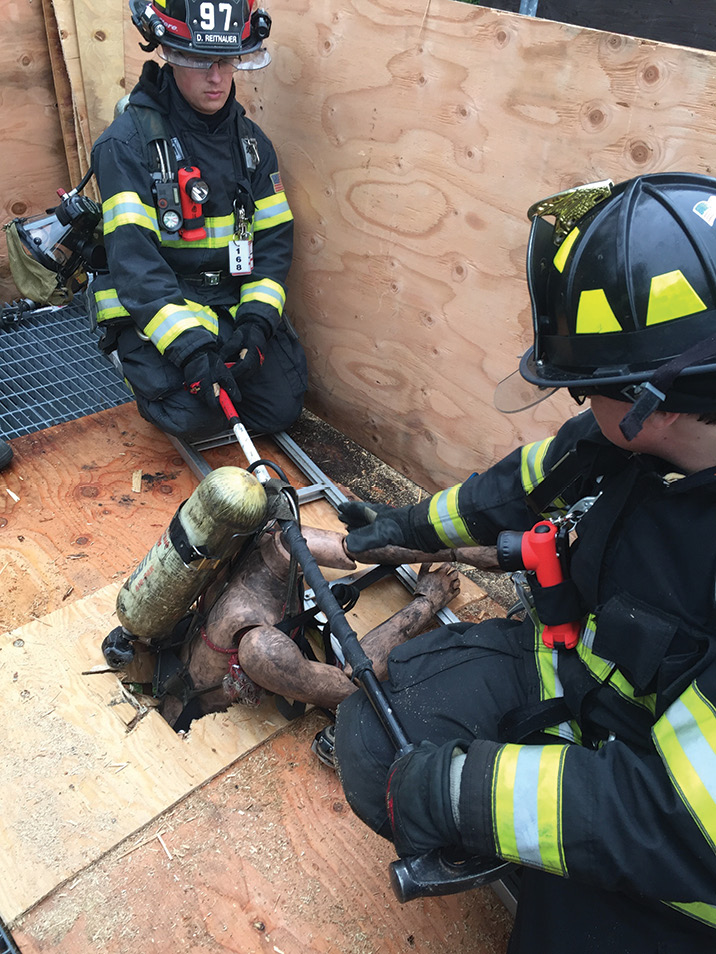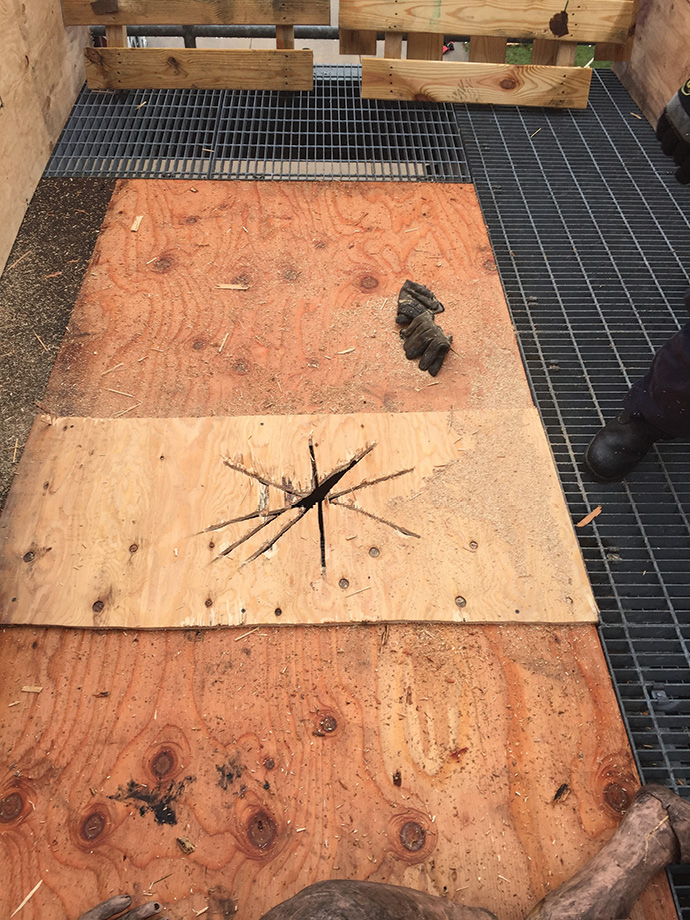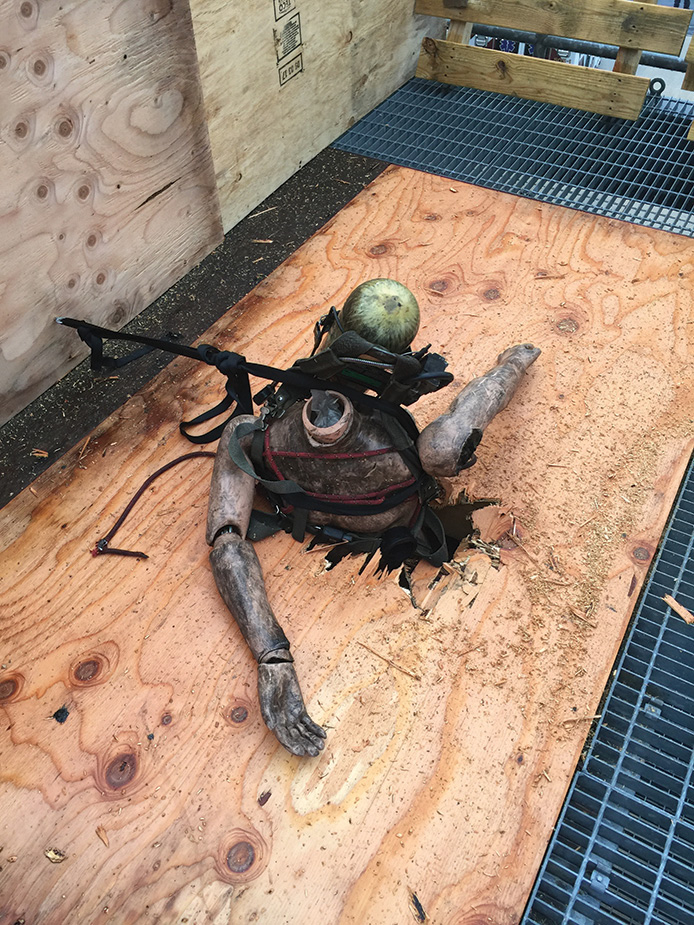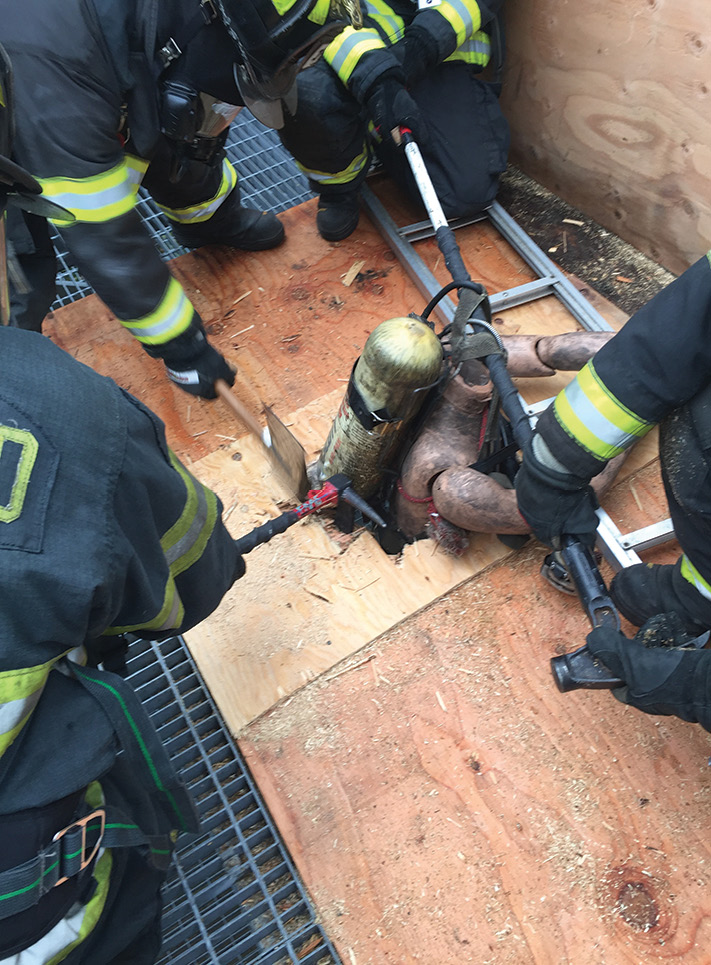
BY ROBERT J. FAAS JR. and DAVE GALLAGHER
In multiple incidents, firefighters have become trapped in the floor during fires for various reasons. With the advent of lighter-weight construction using engineered wooden beams and oriented strand board materials, floors failing from fire exposure are a real possibility and a direct hazard. National Institute of Standards and Technology studies have shown unprotected flooring fails at different times depending on the construction materials used. Investigating a modern dwelling using lightweight construction, one often finds that there is no basement ceiling, which permits fire to spread laterally unchecked. In communities with older construction, the “balloon” frame is still present in residential and commercial occupancies; it also permits unrestricted fire spread.
The two similar incidents reviewed below will provide the ability to recognize a similar devastating event. The Rochester Drill that follows the reviews will enable you and your department to train and prepare for such events. Both incidents occurred on the first floor, resulting in the firefighter or firefighters becoming trapped between the basement and first floor. The entrapments varied, as did the means of removing the trapped firefighters.
RELATED
Firefighter Trapped in the Floor: The Rochester Drill
The Single-Firefighter Double-Horseshoe Below-Grade Rescue
Training Days: The John Nance Drill
Training Days: Firefighter Rescue Drills
In the Ebenezer Church fire and collapse in Pittsburgh, Pennsylvania (March 13, 2004), two firefighters, Richard Stefanakis and Battalion Chief Charles Brace, were killed and 29 others injured when the bell tower collapsed into the vestibule.
A second incident led to the development of the “Nance Drill,” named in memory of Columbus (OH) Fire Department Firefighter John Nance, who was lost on July 25, 1987. Nance died when he fell through a fire-weakened floor in a commercial occupancy into the basement. Multiple rescue attempts were made, but Nance succumbed to his injuries. Various methods have been developed throughout the fire service to rescue a firefighter who has fallen through a floor; this article will address rescuing a firefighter trapped in a failed floor.
Incident 1: Tennessee
On a clear Tennessee night in January 2007, the temperature was 40°F with the wind at five miles per hour (mph) from the south/southwest, when an incident commander (IC) arrived on the scene of a residential fire. He found a garage fire with fire showing from the C/D side of the basement. Units were dispatched at 0031 hours for fire coming from the wood stove in the basement of a two-story, single-family dwelling of ordinary construction. On completion of a 360° walk-around, from the basement entrance the IC observed fire extending through the floor into the first floor. The firefighter in this incident was part of a crew that had made entry and encountered a spongy floor; he then exited the structure to get a thermal imaging camera. He reentered the structure and was an arm’s length from the entry door when he fell through the compromised floor. The investigation found failure of the engineered wooden I-beam support systems.
Incident 2: Wisconsin
In August 2006, it was a sunny 68°F afternoon in Wisconsin with the wind at seven mph out of the south when units were dispatched for the house fire. An ambulance crew was assigned to assist with the primary search initiated on the first floor. The crew initiated a left-hand search at a crawl because of limited visibility. While still within a few feet of the entry door, the crew heard a loud cracking noise and, subsequently, the firefighter fell through the floor into the basement. On investigation, the floor was found to have engineered wooden beams with lightweight parallel chord trusses that were two inches wide and four inches deep with gusset plate fasteners.
Although the initial thought may be that the firefighters had fallen through lightweight construction flooring, as was the case with these two incidents where the floors failed under fire conditions, there are several other incidents where the construction was of heavy timber.
The Rochester Drill
The Rochester Drill is designed for rescuing a firefighter who has become entrapped in a floor.
Equipment
- Roof or attic ladder.
- Hand tools (ax, halligan, and pike pole).
- Rope or webbing.
- Power saw (cordless, electric, or gas).
- Flexible stretcher or other removal device.
- Victim (dummy/mannequin).
Setup
- Determine the drill location; ideally, it should be an elevated platform. In the photos shown, the drill was performed on a training tower.
- Cut multiple failure points in the area where the victim will be placed (photo 1).
- Use an ax, a sledgehammer, or a halligan to push some of the flooring through to simulate an opening with jagged edges.
- Secure the “victim” mannequin with rope or webbing so it does not fall through the opening (photo 2).
- Determine the means of access to the down firefighter.
Drill Version 1
- Firefighters make access on the same level as the down firefighter.
- If the area beneath through which the firefighter has fallen is accessible, place a ladder and a rescuer, if possible, under the fall-through area to support the weight of the trapped firefighter from below.
- In conjunction with item 2 above, use an attic or a roof ladder to support the firefighter’s weight from above (photos 3 and 4).
- Ensure that the firefighter is secured so he does not fall through the floor (insert a pike pole or a hand tool through the shoulder straps).
- Cut or chop wood away from around the down firefighter to allow removal.

(1) Photos by John Simpson.



Drill Version 2
If the floor is severely weakened and is not tenable for multiple rescuers to use to approach, consider the following:
- From a remote area (e.g,. a hallway, through a breached wall from an adjacent room, or from a window), slide a ladder of considerable length (at least 14 feet) lying flat on both beams across the floor to the down member, ensuring that the rescuers keep hold of the ladder or to a rope securely tied to the ladder’s end. The entrapped member may be able wrap his arms around the beams to take the weight off the entanglement and self-extricate. The trapped member would roll onto and lie flat on the ladder. Then the crew can drag the ladder with the member on it from the area.
- From a remote area (e.g., a hallway, a breached wall from an adjacent room, or a window), slide a portable ladder on both beams to reach a wall beyond the trapped firefighter that will be used as a pivot point. Maneuver the ladder to the down member, and have him wrap his arms around the ladder to remove his weight from the entrapment and so that he may clear the entangling debris. Use the ladder as a Class One lever to lift the firefighter clear of the hole, and drag the ladder and the firefighter to a safe area, as in the above maneuver.
- Push a ladder on both beams across the floor with a rescuing firefighter to the down member while also pushing a second ladder on the beams to the down member, as noted in both cases above. Crews are to maintain control of each ladder either directly by hand or using a rope securely tied to the ladder. The member needing rescue can wrap his arms around the ladder to remove his weight from the entrapment. The rescuing firefighter can clear the entangling debris. The rescue crew then removes the two firefighters to a safe area.
ROBERT J. FAAS JR. is a lieutenant with Montgomery (MD) County Fire Rescue, a member of Maryland Task Force 1 Urban Search and Rescue, the hazmat officer on the county’s Hazardous Incident Response Team, an officer for the county Technical Rescue Team, an instructor at the county’s Public Safety Training Academy, and an instructor for On Scene Training Associates, LLC.
DAVE GALLAGHER is a retired lieutenant from the Huber Heights (OH) Fire Division, where he served nearly 30 years; he served with other departments in the Dayton, Ohio, area. Gallagher is a national instructor for several organizations and is an Instructor II for the Massachusetts Firefighting Academy in the rapid intervention team and recruit programs.

